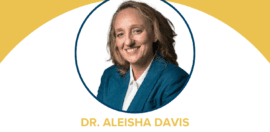Three Million Aussies Living Pay to Pay - Report
16 September 2014 at 10:35 am
Almost 20 per cent of adults in Australia are living pay to pay according to the results of a new survey by the National Australia Bank (NAB).
The latest NAB Measuring Financial Exclusion in Australia report, conducted by Newspoll, found that almost one in five adults in Australia (18.7 per cent) rarely or never have any money left at the end of a pay cycle.
It found that people living in regional areas (22.7 per cent) are more likely to be caught short at the end of a pay period than those living in capital cities (16.4 per cent)
“This is despite the vast majority of people (70.4 per cent) considering themselves to be good at managing their money,” the report said.
Some 16.4 per cent of people sold something they owned when they found themselves without money at the end of a pay cycle, while the most common solution was to access savings (70 per cent) or use a credit card (40 per cent)
As well a dental or medical expense (46.1 per cent) was the most common unexpected expense experienced by respondents in the last 12 months, followed by a higher than expected household bill (42.3 per cent) and car repairs (40.3 per cent).
“More than three million adults in Australia are financially excluded, meaning that they don’t have access to products such as a moderate amount of credit, a basic transaction account or general insurance, ” it said.
Newspoll conducted an independent telephone survey of 1,205 Australian adults aged 18 years and over in July 2014.
The release of the survey coincides with the launch of ‘Stop Small Problems Getting Big’, a joint campaign between NAB and Good Shepherd Microfinance.
Good Shepherd Microfinance CEO, Adam Mooney said that the disconnect between how well people think they manage their money and the reality of being caught short at the end of a pay cycle suggests that some people in the community are not prepared for unexpected expenses.
“When people have no buffer to cope with unexpected expenses like a car or washing machine breaking down, or a change in personal circumstances such as an illness or divorce, problems can quickly build up and become a significant financial and emotional burden,” Mooney said.
“People who find themselves in difficult financial situations often seek quick fixes such as selling their possessions or getting a high cost payday loan. While satisfying the immediate need, these solutions can lead to bigger problems down the track.”
The partners say the campaign reaches out to people experiencing financial hardship, who are often locked out from mainstream banking, to show that there is a safe and affordable alternative to high cost fringe lenders.
NAB and Good Shepherd Microfinance have worked together since 2003 to address financial exclusion, providing more than 100,000 no or low interest loans to people living on low incomes in Australian.
NAB and Good Shepherd Microfinance say they have set a goal of improving financial inclusion for one million people on low incomes by 2018.







